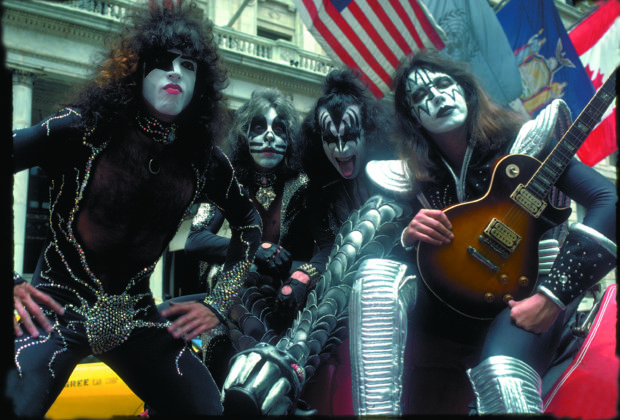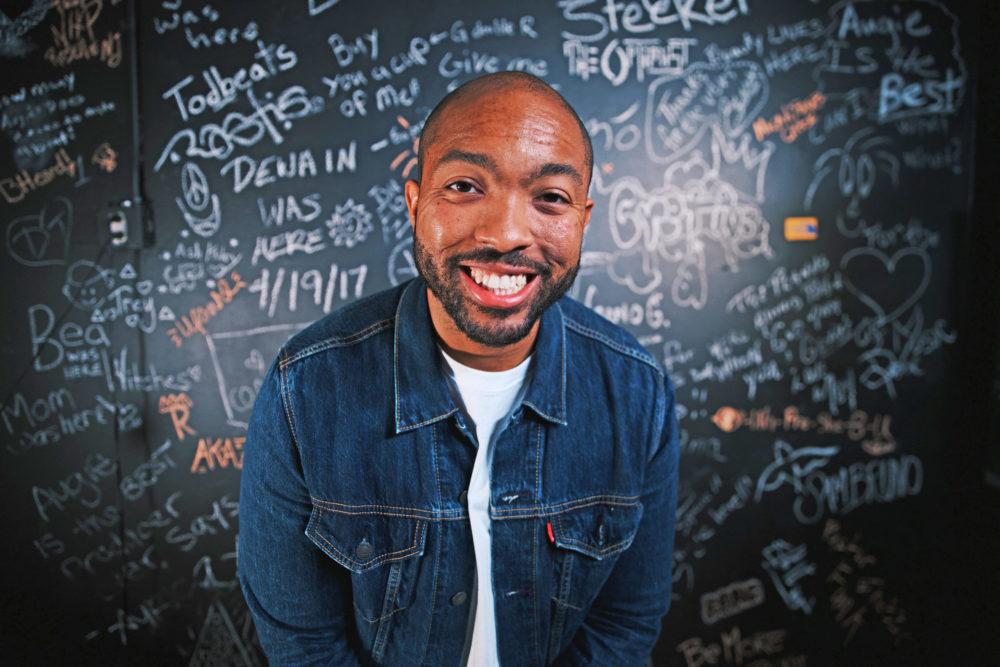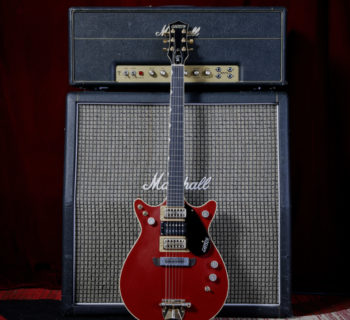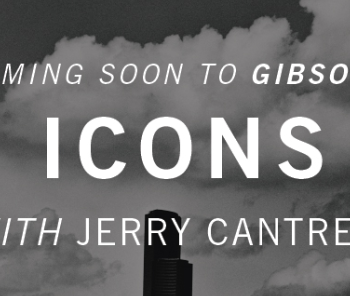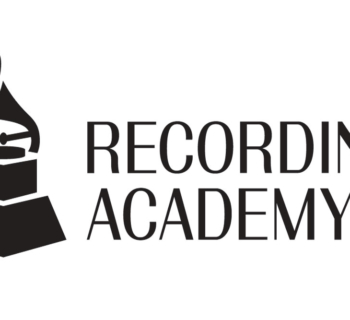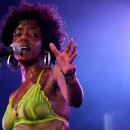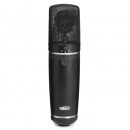Celebrating its 45 anniversary, KISS’ Destroyer was originally released in 1976 and is considered to be one of the quintessential KISS albums. It is the band's first album to sell one million copies in its first year and holds the title of being their all-time best selling studio album.
The UMe label announcement describes the product:
“Packed with concert staples and KISS Army favorites including "Detroit Rock City," "Shout It Out Loud," "God Of Thunder" and "Beth," on November 19, 2021 UMe released KISS - Destroyer 45th in the form of a Super Deluxe 4-CD + Blu-ray Audio box set as well as on standard double black vinyl and limited edition yellow and red double colored vinyl, 2-CD set, and digital.
“For the recording of Destroyer, Bob Ezrin was brought in as KISS's new producer, helping the band reach new levels, both sonically and creatively. The album also showed the band's growth as musicians and songwriters, experimenting with new sounds which came in the form of the softer side of songs like "Do You Love Me?," and songs heavy with orchestral arrangements including "Great Expectations" and their Billboard No. 7 hit single "Beth." Following the breakthrough success of 1975's No. 9 Billboard charting Alive!, Destroyer was the KISS album that brought them to the forefront of the mainstream and transformed them into global rock icons. For its anniversary, UMe celebrates this album's legacy with a staggering amount of bonus material.
“The album is also available on standard double black vinyl and limited edition yellow and red double colored vinyl, as well as a double CD set. The multi-disc configuration first four CDs include the original album newly remastered at Abbey Road, while the second disc features 15 demos from co-founders Paul Stanley and Gene Simmons’s personal archives. A third CD contains studio outtakes, alternate versions, alternate mixes and single edits, while the final CD features a live recording of a show at L’Olympia, Paris, in May 1976.
“For the Blu-ray disc, Steven Wilson has created mixes of the original album in Dolby Atmos and 5.1 surround sound, and two bonus tracks Beth (Acoustic Mix) and Sweet Pain (Original Guitar Solo). The super-deluxe edition also includes a plethora of Kiss artifacts and ephemera, including a 68-page hardcover book with extensive liner notes by Classic Rock writers Paul Elliott and Ken Sharp.”
Julian Gill in The KISS Album Focus: Kings Of The Night Time World, 1972-1982 published in paperback in 2008 touts the songwriting contributions of Kim Fowley to Destroyer.
“In particular, Kim Fowley and Mark Anthony became important contributors during the songwriting process, bringing in the title and basic structure of the song ‘King of the Night Time World’ from their previous band Hollywood Stars' then-unreleased 1974 album Shine Like a Radio.” Fowley also co-wrote “Do You Love Me” with Paul Stanley and Bob Ezrin.
Music journalist and author Ken Sharp, who penned the liner notes for Nothing To Lose: The Making of KISS 1972-1975, described Destroyer to me in a November 2021 email.
“Destroyer is the album where KISS's sound turned from grainy black and white into full blown Cinemascope, hard rock guitars mixed with pianos, strings, calliope, bells and atmospheric sound effects to create a dazzling fantasia of sound and textures. Decades on, Destroyer is regarded as KISS's most ambitious and accomplished release.”
On February 18, 1974 Casablanca Records held a party where the band played live locally at the Century Plaza Hotel in Century City. I watched with Justin Pierce of The Hollywood Press, deejay Rodney Bingenheimer and met The Fugitive actor, David Janssen.
I remember thinking “here is a band whose first LP and career will either be over in 15 months or they’ll be with us for 50 years.”
It was a loud, defiant showcase, and the food was incredible. Casablanca label head Neil Bogart sure knew how to throw a party.
For the February 15, 1975 issue of the now defunct UK music weekly Melody Maker, I interviewed Paul Stanley, Peter Criss and Gene Simmons of KISS.
Kiss: Kiss and Tell Melody Maker, 15 February, 1975
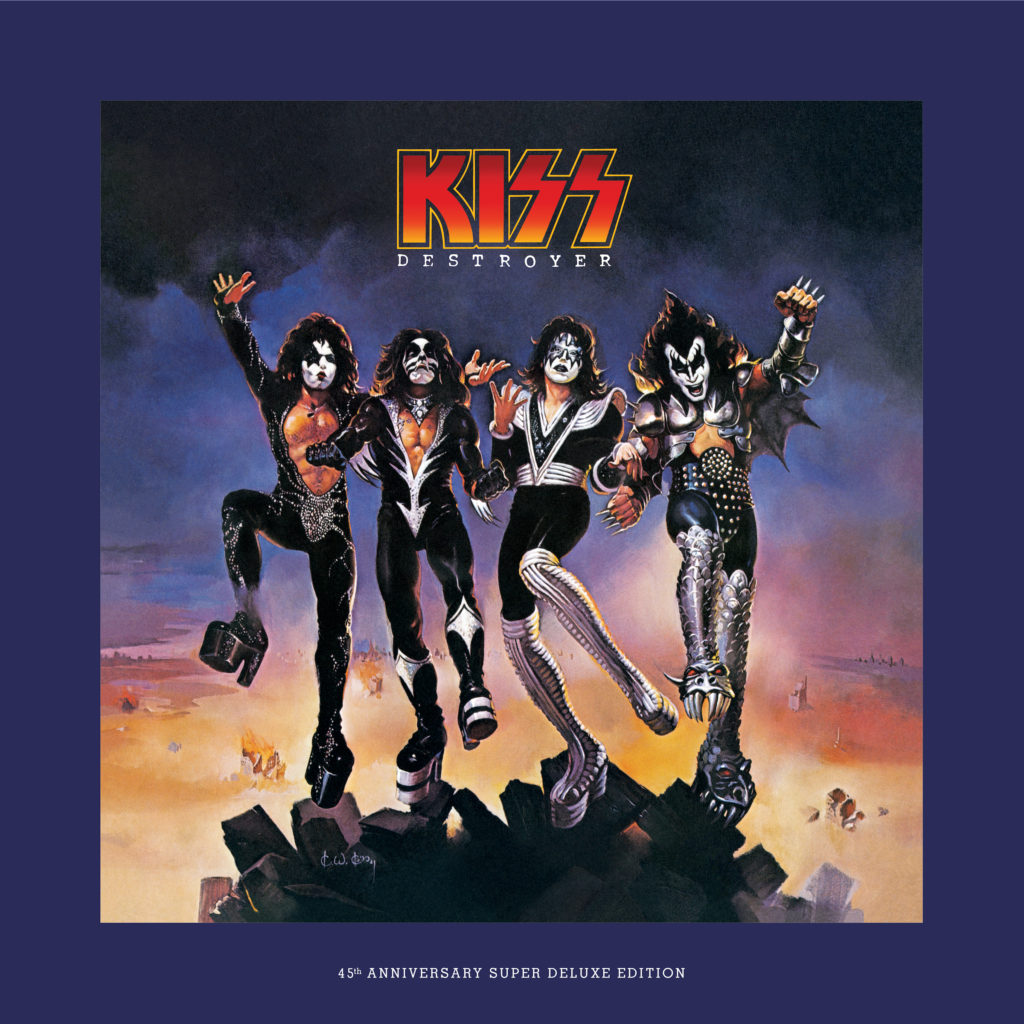
Courtesy of KISS, UME
"We sold out two houses in Detroit at 12,000 each and were the biggest thing to hit the city since the Beatles. People were charging the stage; throwing jewelry at us, pills and everything else you could hope to imagine," reflected Kiss member Paul Stanley with just a hint of conceit.
In fact, the group does have a lot to be proud of, for within the span of about a year, the once obscure boys from New York City have attained a phenomenally loyal following both state side as well as in Japan.
"It wasn't too long ago when we were in the audience and paying. The whole premise of Kiss was that when you're paying to see us, we feel we owe you everything. It's an exciting brand of rock and roll that comes off as pure entertainment. And if you want the music, you can always listen to our albums."
The whole Kiss story started back in '73 when record company executive Neil Bogart was starting a new label called Casablanca. Bogart had been the man responsible for signing a majority of important acts in the sixties to his Buddah label, but he now felt it was time to broaden his perspective and look into the seventies.
Stereotype
Paul remembers: "We were basically a city band playing dances all over New York. It was the classical rock 'n' roll stereotype. And then Neil discovered us, and after listening to our demos, he asked us to be his first release on Casablanca. He promised us enough things to put together the exact kind of show we always hoped for.
"It was actually like a dream come true. With his assistance, we've been able to conceive what we feel is probably one of the most viable uses of theatrics. Our purpose was, and still is, to enhance the music rather than be pretentious."
Indeed, the whole Kiss consciousness is an awesome sight. Their show opens with the lighting of their huge KISS sign that can be seen throughout the arena. Then the band appears amid an onslaught of energy and thrust. The four piece outfit is each clad in a leather jumpsuit highlighted by Kabuki-like makeup utilising heavy traces of black, silver and red against a white base.
Bassist Gene Simmons looks at their approach from a unique perspective. "The band that first knocked me out was the Beatles. Up until then, one wasn't aware of the visual presence a group could have. Each had the same haircut, dressed the same, and if you saw one of them walking down the street, you knew that he belonged to that group. And that concept knocked me out, especially the fact that there was no front man and each member was a quarter of the whole.
"People have told us that they see similarities in Kiss. Each one of us is so visual we don't need a front man. In previous bands we've been in, it was each one of us who stood out. Now it's a case where four people have gotten together as a cohesive and incredibly tight unit. It's also an added plus for the people in the audience."
Bizarre
With the Kiss image being so particularly intriguing and striking, one question everyone wanted to know was where the band got the idea for the bizarre use of heavy makeup. Stanley cautiously ponders the thought, "We've often been accused of being pretentious, but in actuality our concept of what we're doing is an effort to shy away from pretentiousness. The thing we do is very surface, for there are no built in subtleties in our music or what we do on stage. We feel our whole image is based on the use of imagination.
"I think black leather is very tough and exciting. I'd much prefer something macho rather than coming on in pink satin. There isn't any attempt other than trying to perfect a stage act. It's a very positive trip. There's nothing negative about our show. Just go to a concert and see the kids dance in the aisles, singing along with us.
"We are, in essence, with the audience for we feel we represent the looseness that everybody can identify with. When people look at us they say, 'That's what's inside me,' they understand that's not what they look like, but rather what they feel like.
"I think we are an extension of everything that happened before us. We're children of the last generation of rock. All my idols, the Stones, Who, Move, and the Kinks had a profound influence on my outlook on the world. When I first saw Peter of the Who, I knew that excitement could be attained and we've tried to live up to that sort of archetypal image."
Drummer Peter Criss looks at it from a different angle: "I was always into Phil Spector, the Ronettes, early Stones, as well as early Motown with Marvin Gaye, the Four Tops and all the other numerous talents. Therefore, all our influences owe to a melting pot and what you get out is not blatantly derivative of any one area. At times, we have tinges of a lot of quality music which has gone down before us. In this age, it's extremely difficult to be original, if not impossible. What you can hope for is to have the right influences predominate throughout your work."
Rollicking
With their brash and assailing brand of rollicking rock, Kiss has admirably been able to succeed with almost any group they've been billed with.
Bogart, who signed the group has been the one man credited with signing such diverse acts as Question Mark & The Mysterians, Terry Knight & The Pack, 1910 Fruitgum Company, Curtis Mayfield, Melanie and the Isley Brothers, as well as being influential in bringing the English Charisma label to the US for distribution when he was president of Buddah.
His opinion of the band is flattering to say the least: "I've never been into hard rock until recently. But I can honestly say that Kiss is the first band that I've devoted myself 100 per cent to. In fact, they're everything I've been looking for in a rock band. Their visual show that features a drum set that levitates six feet in the air, a lead singer who blows fire out of his mouth, and their wonderful use of makeup is just a shatteringly satisfying experience. Even more important, is the fact that they're probably one of the best rock 'n' roll bands I've ever heard in my life."
Another incredible aspect to the Kiss story is the gigantic support they've achieved in Japan.
"It's nice for a band, other than a Japanese group, to put out an album with Japanese liner notes. If for nothing else, it gives our fantastic fans in the Orient something different, as well as being aesthetically pleasing. All the photos on our second LP, titled Hotter Than Hell, were from a party we had which was something right out of Satyricon, even featuring naked women in bird heads. We felt that the Japanese sense of artistry would get off on it, and we understand it's been received quite favourably."
At the moment, the future looks bright indeed for the boys from Gotham City who are now planning an exhaustive tour of England, Europe, and Japan that they are looking forward to with a sense of apprehension, as well as expectation.
"We've often been thought of as an English band by many fans in the States, so it'll be interesting to see how we go over there. But just the satisfaction in knowing that we're now reaching young teenagers all the way through 27 year olds means a lot to us."
Harvey Kubernik is the author of 20 books, including Leonard Cohen: Everybody Knows, Canyon Of Dreams: The Magic And The Music Of Laurel Canyon and Turn Up The Radio! Rock, Pop and Roll In Los Angeles 1956-1972.
Otherworld Cottage Industries in August 2020 published Harvey’s book, Docs That Rock, Music That Matters. Kubernik’s writings are in several book anthologies, including The Rolling Stone Book Of The Beats and Drinking With Bukowski.
Sterling/Barnes and Noble in 2018 published Harvey and Kenneth Kubernik’s The Story Of The Band: From Big Pink To The Last Waltz. For November 2021 they penned Jimi Hendrix: Voodoo Child for the publisher.
Kubernik wrote the liner note booklets to CD re-releases of Carole King’s Tapestry, Allen Ginsberg’s Kaddish, Elvis Presley The ’68 Comeback Special, the Ramones’ End of the Century and a vinyl release for National Record Store Day Black Friday November 26, 2021 of the never issued Big Brother and the Holding Company (featuring Janis Joplin) Combination of the Two Live at the Monterey International Pop Festival.

